Historic heart of the city
Please note that this text is an extract from a reference work written in 1990. As a result, some of the content may not reflect recent research, changes and events.
The Old Town is the area bounded by East Street , North Street , West Street and the sea which forms the historic heart of Brighton. It was probably developed from about the thirteenth or fourteenth centuries around East Street , Middle Street and West Street as the result of expansion onto the cliff top by the fishermen of the ‘Lower Town’ (q.v.) below the cliffs. However, the whole town was burnt by the French in 1514 and now only the street pattern remains in the Old Town from this period, although altered since by the construction of Prince Albert Street and the obliteration of the southern half of Market Street . More streets were developed northward from the cliff top on the open space in the middle of the town from the late seventeenth century and some building also occurred on the ‘Knab’, but most of the remaining old buildings now date from the late eighteenth and nineteenth centuries. Now chiefly commercial, the Old Town has a resident population of around 500. See also “Brighton – Early History” and ” Fishing Industry “. {1,10,277}
The Old Town of Brighton has been designated an outstanding conservation area, and it is to be hoped that any future development will only enhance the character of the area and that all old buildings will be respected. The streets and twittens of interest are detailed below, but see also ” East Street “, ” Grand Junction Road “, ” Hospitality Inn “, ” King’s Road “, “Lower Esplanade”, ” North Street “, ” Old Ship Hotel “, ” Pool Valley “, “Queen’s Hotel”, ” Town Halls ” and ” West Street “.
a) BARTHOLOMEWS: This road takes its name from the small Chapel and Priory of St Bartholomew that once stood on the site of Bartholomew House, just to the south-west of the junction of Market Street and Prince Albert Street . The chapel was established, possibly as a monastic farm, between 1120 and 1147 by the great Cluniac Priory of St Pancras at Lewes which supplied it with two or three monks, but little is known of its history. It was partially destroyed by French raiders in 1514, but the Prior’s Lodge, a residence connected with the chapel, was spared. In 1547 the priory was dissolved under Henry VIII and some almshouses were erected on the land then known as the Bartholomews which stretched from Little East Street to Black Lion Street . In 1592 the ruinous chapel and the other buildings of the Bartholomews were purchased on behalf of the town, and the almshouses were sold to the parish in 1733 for £17. The Brighton weekly market was re-established on the Bartholomews in about 1730 and a daily market hall was built in 1774, but the land was acquired by the town commissioners in 1824 for the building of a new town hall in 1830-2. In 1774, workmen digging excavations for the market hall discovered an ancient cemetery. Downing tools in reverence. they continued on being told by the vicar, Revd Henry Michell, that the monks had been Catholics! The Prior’s House, which was used as the vicarage, remained on the site of Prince Albert Street until 1790, and a small portion of an ancient flint wall which may have been part of St Bartholomew’s Chapel stood to the north of the former market hall in Market Street until the area was redeveloped in the mid 1980s. {1,16,17,18,270}
In 1984-7 the Hospitality Inn (q.v.) and the municipal offices of Priory House and Bartholomew House were erected adjacent to the Town Hall to form Bartholomew Square, a civic square lined with fashionable shops and with Le Pavillon cafe forming an attractive centre-piece.
The road known as Bartholomews now runs along the northern and eastern sides of the Town Hall only. Nos.3-6 are early-nineteenth-century, typically Georgian-style listed buildings, no.5 in particular being an elegant four-storey house with an iron balcony; the similarly-styled buildings on the eastern side, Libertys store, are an attractive addition of 1989 which won a council planning award. No.8, The Cottage, is a charming listed house with a tarred and cobbled front, probably dating from the eighteenth century. {44}
Any numerical cross-references in the text above refer to resources in the Sources and Bibliography section of the Encyclopaedia of Brighton by Tim Carder.
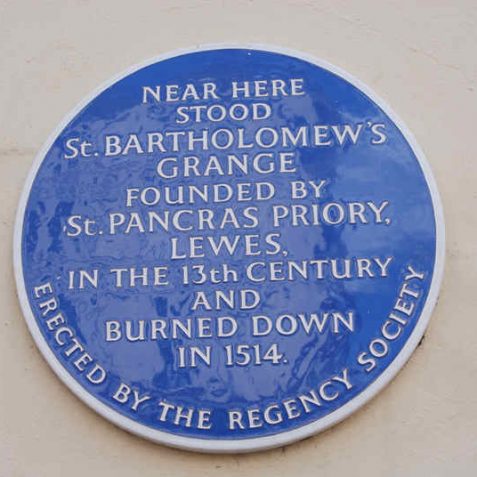


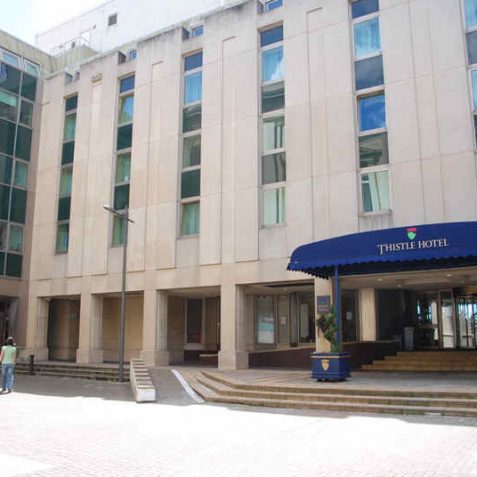
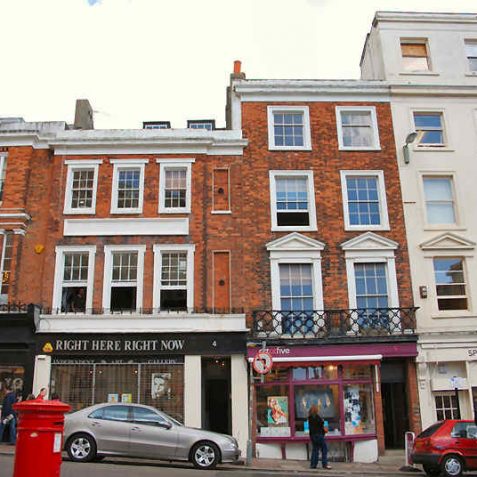

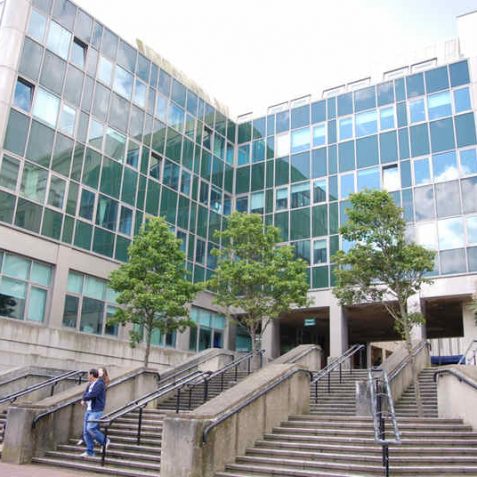
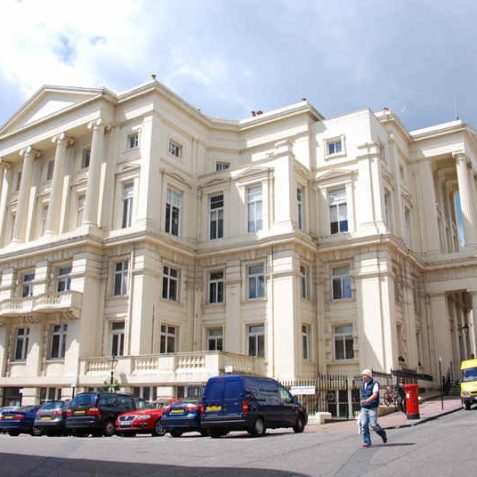




Comments about this page
It beats me how the ugly 1980s municipal offices extension was ever allowed to ruin this view and this street by sticking out into and blocking off Bartholomews. But then in those days ancient roads , buildings and views were considered unimportant and a hindrance to “development” (just like now really). One satisfaction is that the Town Hall and the other older buildings will probably still be around when the glass shoebox has finally been pulled down.
Can you tell me anything about no 12. My great grandfather lived there in late 1800.
Number 12 where Hannah?
Anyone have any info on 12 Bartholomew’s? My ancestors used to live there in 1870’s and 1880’s.
Add a comment about this page